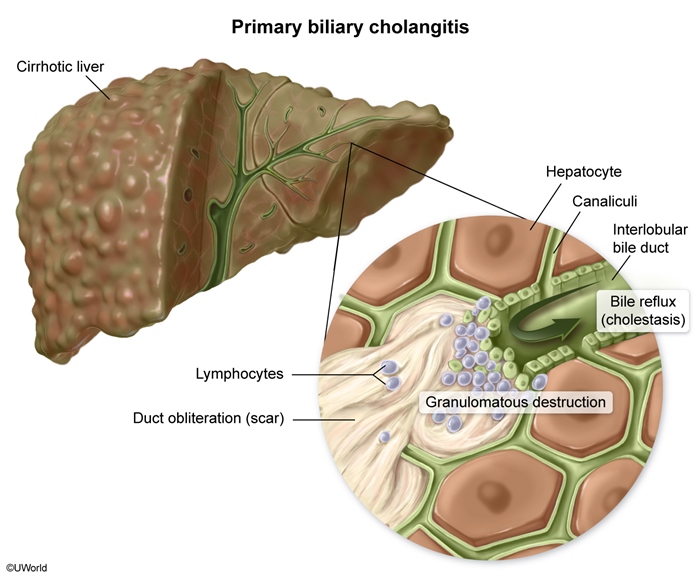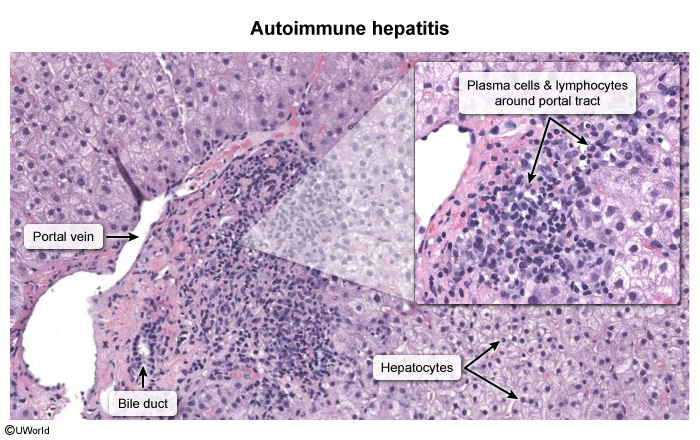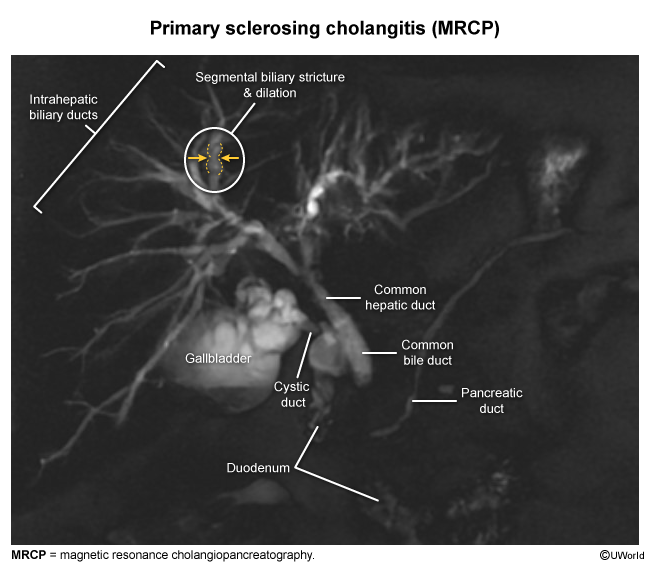Autoimmune Hepatitis
Article Sections
Introduction
Autoimmune hepatitis (AIH) is a chronic autoimmune liver disease characterized by progressive hepatocellular injury that can ultimately lead to cirrhosis. AIH predominantly affects women and has a bimodal age distribution, peaking in the 20s and 40s-50s.
Pathophysiology and histopathology
The pathogenesis of AIH may involve exposure to environmental triggers (eg, viruses, medications, vaccinations, herbs) in genetically susceptible patients (eg, those with a high-risk HLA allele), leading to regulatory T-cell dysfunction. The immune dysfunction ultimately results in loss of self-tolerance and a T-cell–mediated immune attack against hepatocytes, causing hepatocellular damage. Histopathologic examination reveals portal and periportal lymphoplasmacytic inflammation with damage to periportal hepatocytes (interface hepatitis) (Image 1).
Clinical presentation
AIH presents heterogeneously, ranging from asymptomatic aminotransferase elevations (25%) to cirrhosis (33%) or fulminant hepatic failure. Most commonly, patients have symptoms that include:
Continue Learning with UWorld
Get the full Autoimmune Hepatitis article plus rich visuals, real-world cases, and in-depth insights from medical experts, all available through the UWorld Medical Library.
Figures

Images

